Dark Tourism Things to do in La Paz, Bolivia
La Paz isn’t Bolivia’s capital (that title goes to the sleepy city of Sucre). Yet it’s easy to see why the world’s highest city (at 3,300 metres above sea level) might lead some people to think it is. With beaten up colonial buildings sitting alongside modern apartment blocks, this teeming metropolis with a population of 2.7 million people certainly feels like one and La Paz’s grand location is worthy of being a capital too. Set in the bowl of a huge valley, it’s overlooked by towering snow capped mountains.
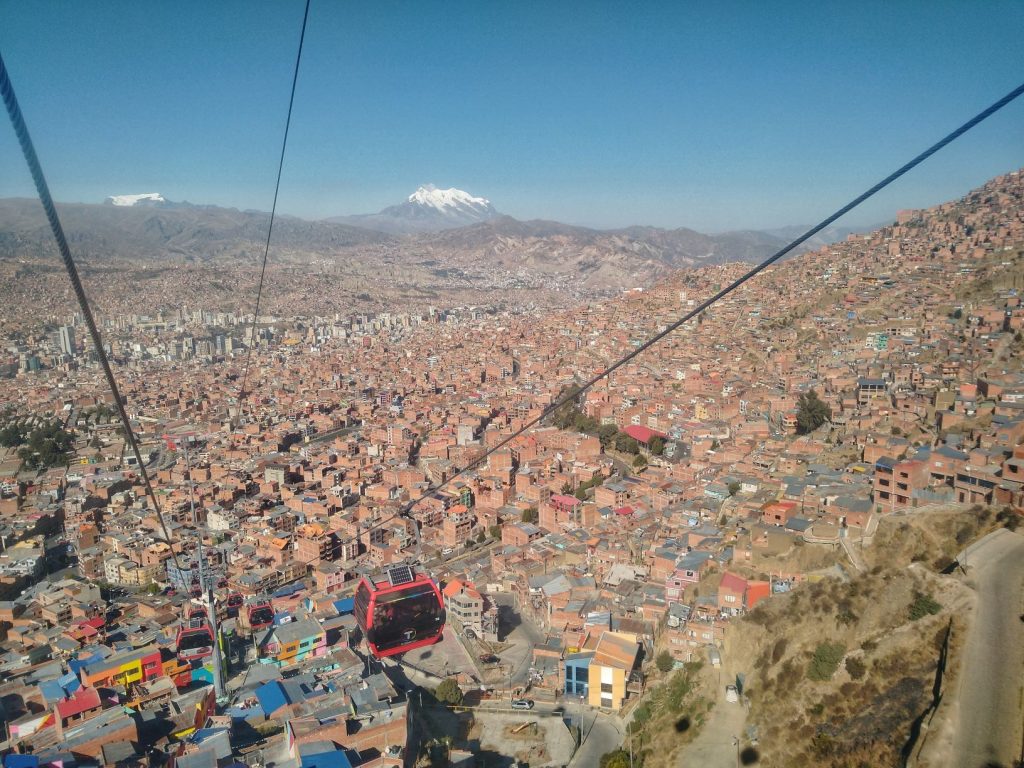
La Paz is a city some will love and some will hate. Many use it as a stop off for onward travel, but I found there was a lot to explore. Bolivia stands on its own as one of the most unique countries in South America and when I dug a little deeper, La Paz revealed some of the most bizarre, unusual and offbeat things to do in any South American city. All these experiences are unique, but some border on dark tourism. Read on and I’ll tell you more about what I saw…
La Paz’s San Pedro Prison
What’s a prison got to do with a list of things to do in La Paz? Well this is like no other prison you’ve seen before. Set in San Pedro (Sucre) Square, the pink building looks non-descript from the outside. Yet inside, the prisoners run the show. Home to 2,500 offenders and just 10 guards, this place is like the wild west. In what has to be one of the most unconventional prisons in the world, San Pedro Prison operates on its own terms.
Racketeering, drug smuggling and cocaine production all go down here. Most prisons are designed to rehabilitate, but San Pedro is simply a ‘University for Criminals’. Everything inside comes at a price. If you become a prisoner and want to sleep in a cell, you’ll need to barter for it with the owner. No one’s entitled to a space and King Pin ‘Landlords’ own all cells and property. They can hike up the ‘rent’, or get you to do their dirty work in exchange for a place to rest your head.
The guards don’t get involved with problems either. If a crime is committed, there’s only one way to serve justice and that’s community style. By stealing someone’s cigarettes you could wind up dead or at the very least, beaten by the hands of other prisoners.
With San Pedro Prison’s unconventional set up, you won’t be surprised to learn that partners and children can visit at any time of day. However, prisoners may need to bribe the guards to open the gates and let them in. With police wages so low in Bolivia, even they get in on the action.

As if things couldn’t get any more crazy, San Pedro Prison used to be open for tours. For a price, backpackers could go and see the sights and even stay the night if they wanted. Many stayed for weeks on end and partied with the prisoners. The Lonely Planet Guide to Bolivia used to promote the tours as one of the top things to do in La Paz!
That’s all changed now though and if you want to try and tour the prison, that’s up to you. Restrictions have been put in place as this dark tourist experience ended up getting, well…dark! After one tourist was stabbed and another raped, it was decided that tours should no longer run. The police actually stepped in to try and stop them from happening.
If you meet the ‘right’ people you can still go visit San Pedro Prison. But a word of caution. In 2018 a group who entered nearly didn’t make it out alive. After eight hours and a $2,000 bride, they were eventually released.
La Paz’s San Pedro prison is only for the most extreme tourists!
If you want to learn more about San Pedro Prison, I highly recommend the book Marching Powder by Rusty Young. The book tells the true story of Thomas McFadden, a Tanzanian inmate held there on charges of cocaine smuggling. Rusty Young visited as a tourist, but became friends with Thomas and eventually wrote his story. Compelling stuff!
La Paz Witches Market (Mercado de Las Brujas)
La Paz Witches Market (Mercado de Las Brujas) might sound strange. Yet there is probably something much more sinister hiding under your feet as you explore the stalls. I’ll explain in a moment, but first here’s what you can expect to see. Strolling the streets, you’ll be greeted by dead llama fetus’. Some with their legs bound by rope, others hanging by their necks. There’s also coca leaves and incense aplenty, as well as items which are said to bring good luck, money or perhaps even love.
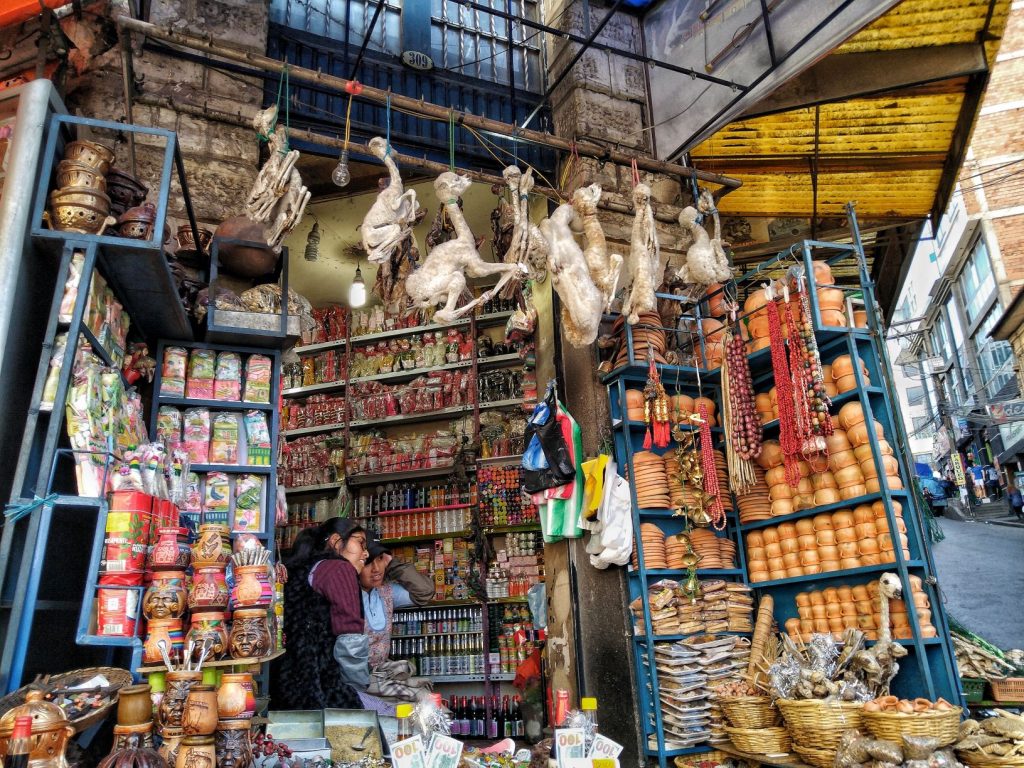
Locals buy a combination of these items and have them carefully prepared by a Shaman at the market. This is called an ‘ofrecimiento’ and is a Bolivian tradition of giving thanks to Pachamama (Mother Earth). A prayer is said and the ofrecimiento is then burned.
So why a llama fetus? In La Paz, a llama fetus is always buried under the ground before a house is built. This should appease Pachamamma for the earth they are using. But what happens when something big needs to be built, such as an entire apartment block? Well this is where it gets dark. The offer of a llama fetus won’t quite cut it, so something bigger is required.
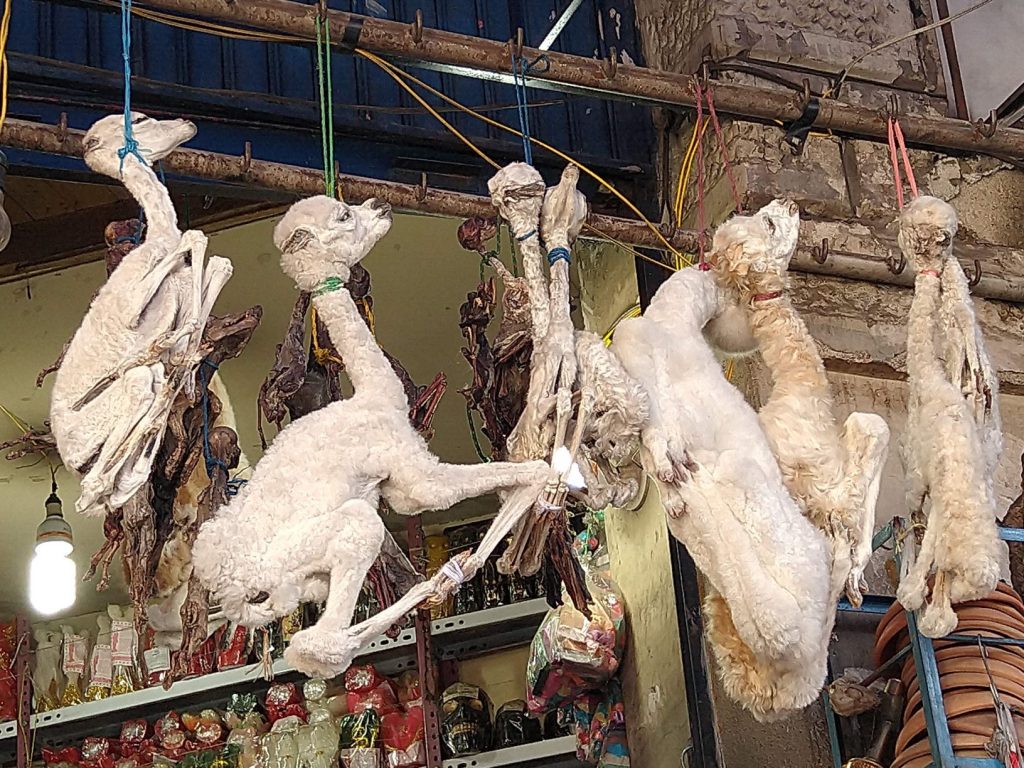
Under the bridges of La Paz live the city’s homeless. Sadly down on their luck, when approached with an offer of a shower, food and a place to stay, they are often more than willing to accept. A clean body, full belly and a few drinks later, they might be met with a sinister change in situation. What they wouldn’t expect is to then be thrown in a hole and covered in cement. Once the cement has dried, the ofrecimiento is then burned on top of the ground and the blessing to Pacha Mama is complete.
The jury is out on whether this is an urban myth, but many La Paz residents believe ‘homeless sacrifice’ still goes on to this day.

Elephant Cemeteries – Los Cementerios de Elefantes
Bolivia is not famous for elephants and these Elephant Cemeteries (Los Cementerios de Elefantes) are NOT places you can visit. I don’t have a picture to share with you either and I’m glad about that. Sadly La Paz has a homeless problem and many of those out on the streets have become crippling alcoholics. In some cases, addiction has gotten so bad, that a person may wish to end their life. The answer is not Dignitas.
Checking in to a cold and empty room (or ‘Elephant Cemetery’), the sufferer is given a bucket of almost pure alcohol. The door is then locked and they live out their final days in an alcohol induced daze. The door is only opened once the last breath leaves their body.
I don’t know where to find an Elephant Cemetery and I’m sure you don’t want to know either. Sadly though, they do exist.
If you want to learn more about this dark practice, Victor Hugo Viscarra has written a story called ‘Los Cementerios de Elefantes’. There’s also a ‘classic’ Bolivian film of the same name by Tonchy Antezana. Check them out!
Plaza Murillo – La Paz Town Square
Every town plaza in Southern America seems to have a gruesome history. La Paz’s Plaza Murillo is no exception. Here you can see the lamppost from which revolutionary Pedro Domingo Murillo was hung 1809. As a fitting tribute the plaza was named after him. A cast bronze bust of Pedro now sits looking at the lamp post from across the street.
Looking up there is a clock above the Bolivian Congress Building. Yet the numbers go in reverse. This is because in the southern hemisphere the sun shines in an opposite direction. Thus Bolivia decided it was appropriate to reverse the numbers. It’s also a sign that Bolivian’s don’t play by anybody else’s rules!
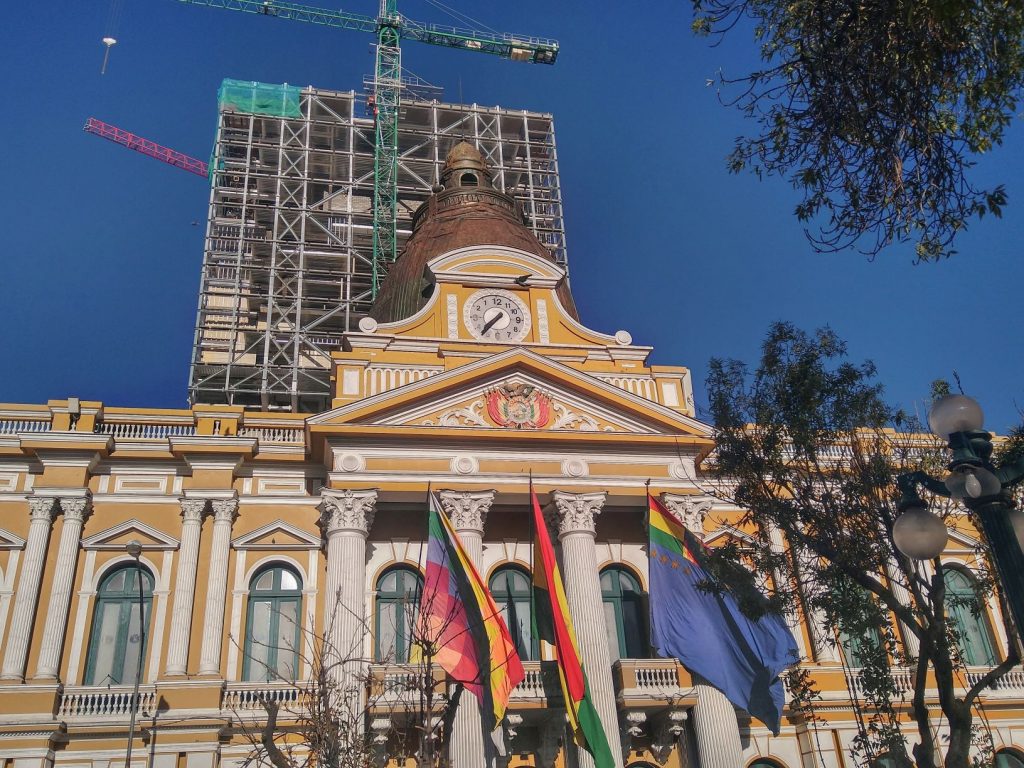
If you want to see something a bit more macabre before leaving the Plaza Murillo, look to the green building in the far corner. Casting your eyes north, dozens of bullet holes can be seen in the walls. These are still here from a major incident in 2003. It started when then president Gonzalo Sánchez de Lozada began taxing wages in different sectors of the economy. A tax was imposed on the army, but not the police. Things came to a head when the police force and the army squared off against each other in the Plaza Murillo. Shots were fired from snipers on rooftops and an 18 year old boy was killed in the crossfire. When a nurse ran over to help, she too was killed. The bullet holes in the wall remain so that Bolivia never forgets.
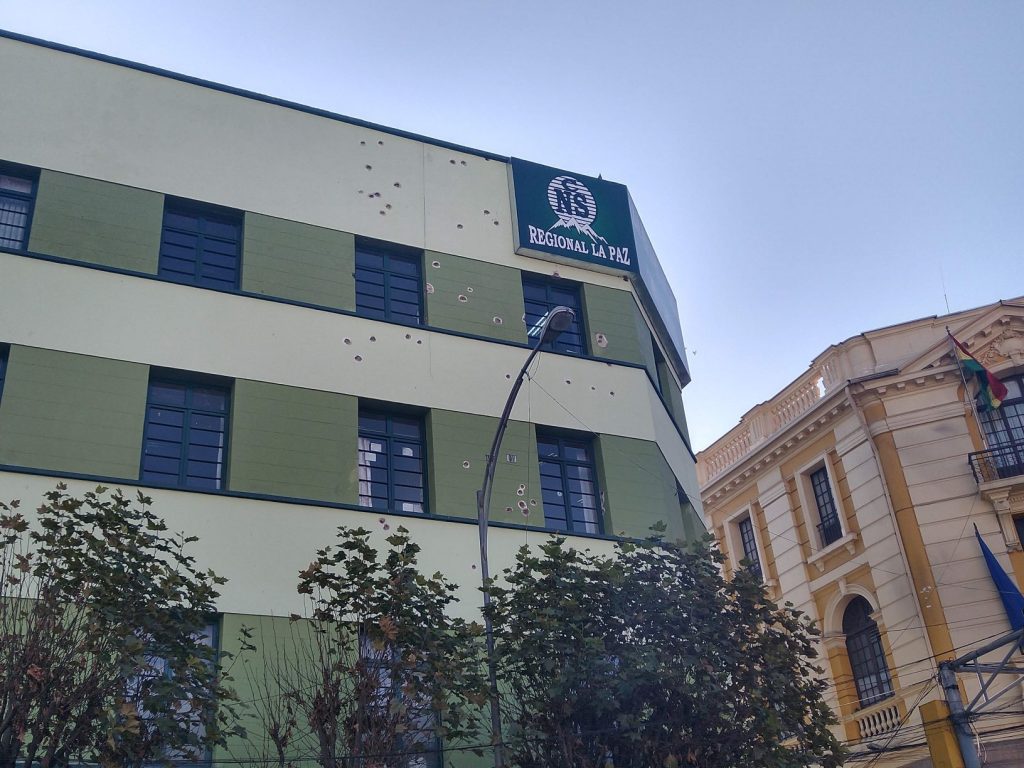
La Paz Cebritas (Zebra Crossing) – Zebras Urban Educators of La Paz Bolivia
On a lighter note, something unique to La Paz and other Bolivian cities is the use of real zebra crossings. Well…almost! With some of the worst traffic and road rage in South America, Bolivians saw the need for some light hearted relief to stop motorists getting so angry. With difficulty getting everyone to ‘just calm down’, in 2001, the Zebras Urban Educators of La Paz Bolivia was launched.
The roads would usually be so congested that it was hard to even see the zebra crossings. But what if a zebra wanted to cross the road? People started to wear zebra costumes and cross the road. If they saw a driver in the bus lane, or not stopping for the traffic lights, the zebra would step out, do a dance and make them stop! If someone needs help crossing the road, one zebra will halt traffic and another will hold the hand of the person tat wishes to cross and lead them across the street.

It’s so bizarre and a practice completely unique to Bolivia. It might seem like a bit of comedy and in many ways it is. But accidents have since reduced and the international community has heralded it as a success. The initiative was even awarded the Guangzhou International Award for Urban Innovation in China.
La Paz Coca Museum
Coca leaves are infamous throughout the world. Most people associate them with cocaine production. The natives of Bolivia associate them a cure for altitude sickness. The Coca Museum in La Paz gives a detailed history to both sides of the story.
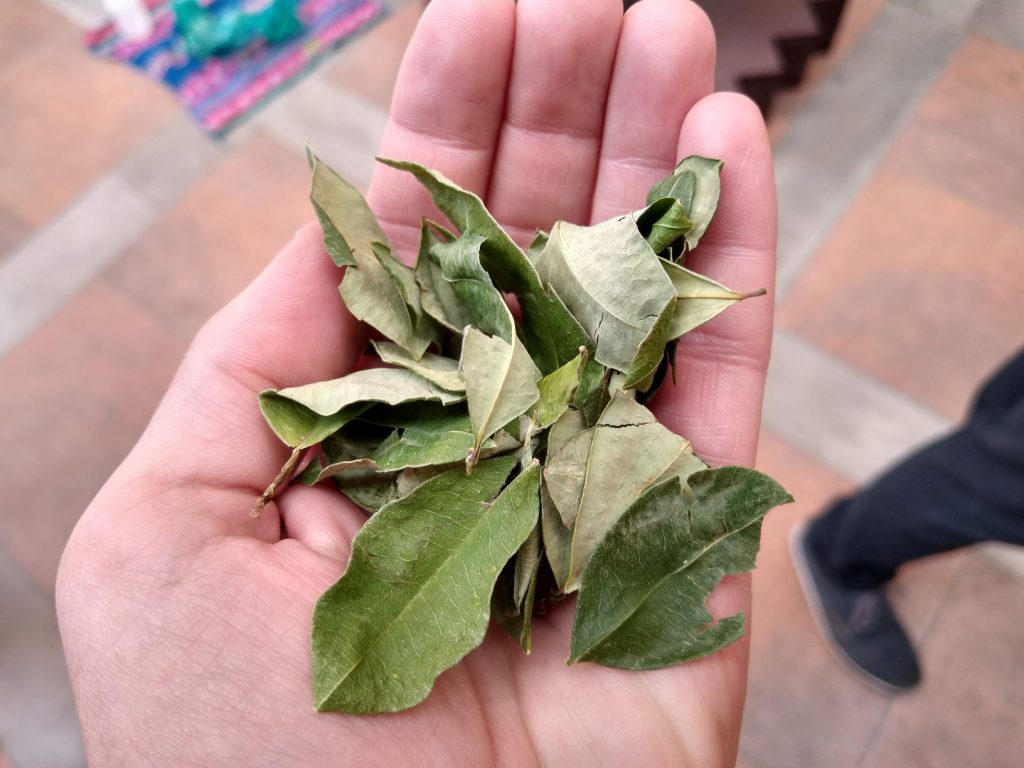
It starts with the history of the coca leaf and its use by the Incas, then goes on to tell how coca farmers grow it to make a living. Then the museum starts a campaign against the west and how everyone is stupid for using cocaine. In addition, they are very keen to point out how the Incas were right all along about coca being used for medicinal purposes. It took Doctors in other parts of the world a long time to latch on to this and the museum wants you to know about it. Take this quote “Cocaine was the world’s first anesthetic. Before its discovery, doctors used other torturous methods during surgery. The discovery of cocaine allowed surgeons to abandon their prehistoric methods, albeit centuries later than the Incas”.
What prehistoric methods the world’s surgeons have been using I’m not sure?!
Things start to get bizarre when the Coca Museum introduces statues into their displays. You can pose with a drawn out drug addict, clearly a victim of the white powder. Alternatively you might like to see some armed guards protecting a coca field.
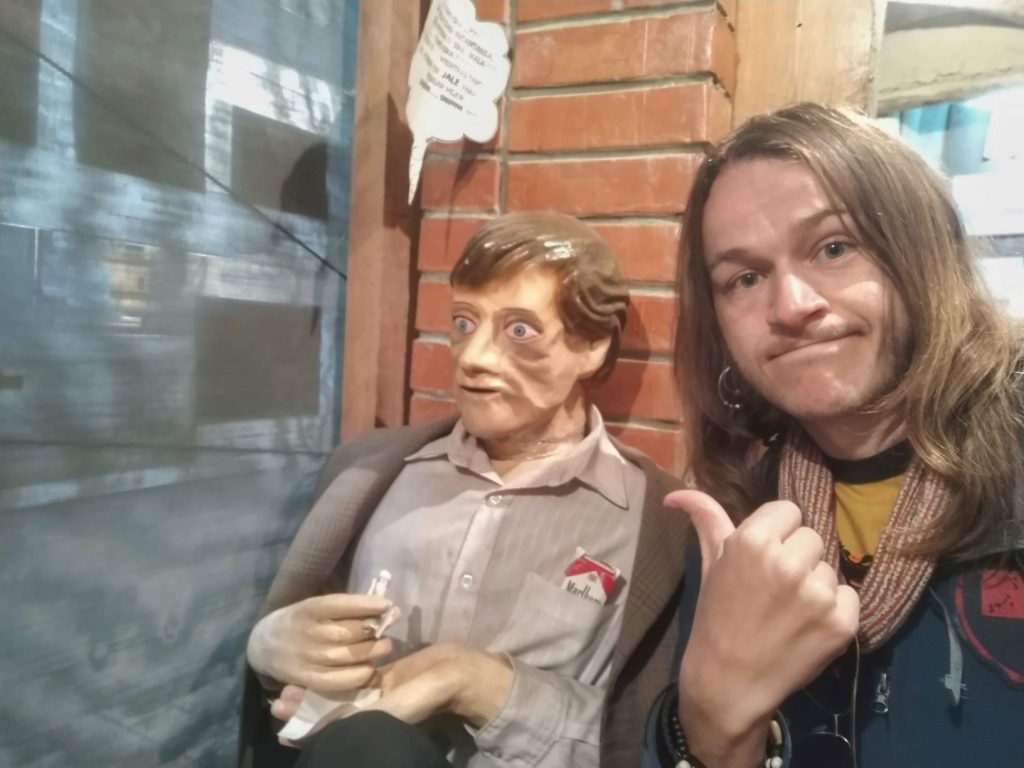
Did the original Coca-Cola recipe have cocaine?
The original Coca-Cola recipe contained coca, but not cocaine. In the Coca Museum Cafe you can actually try the original recipe Coca-Cola. It’s an interesting taste, more akin to Coca-Cola mixed with green tea. It has to be tried and is the only place in the world where you can get it. They even have coca wine which used to be popular in France in the 1920’s. You should try that too!
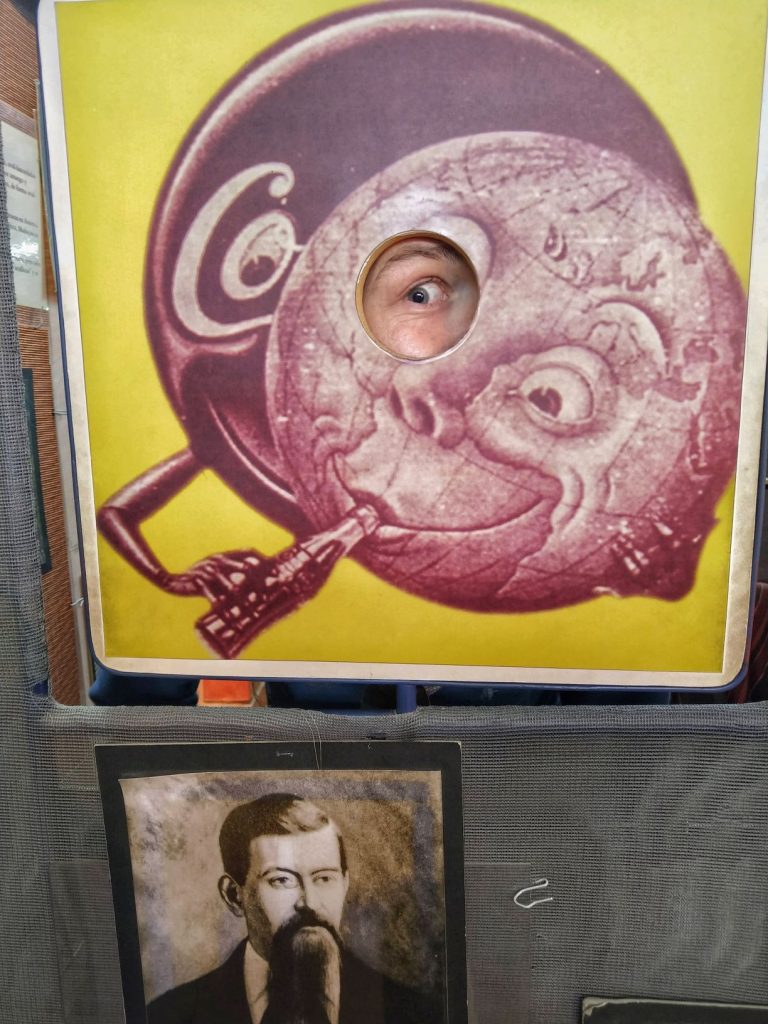
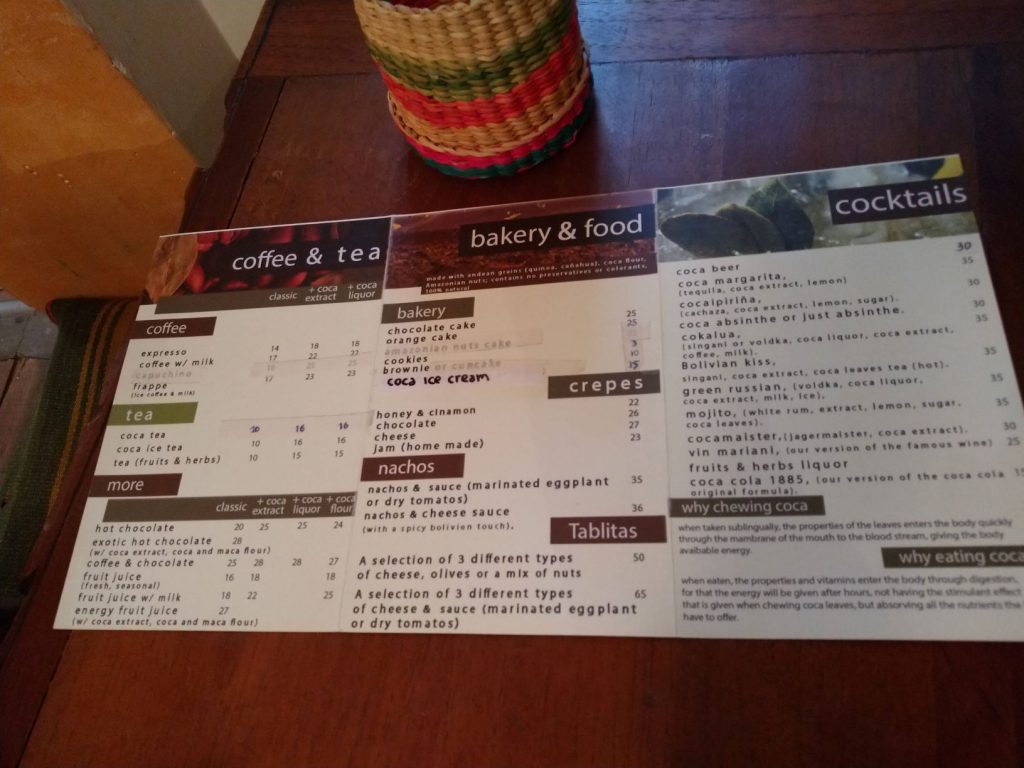
Cholita Wrestling in La Paz
We’ve all heard of Lucha Libre wrestling in Mexico, but Cholita Wrestling may have passed you by. Bolivia’s indigenous Aymara and Quechua women are often referred to as ‘Cholitas’. They’re easily recognisable by their bowler hats, wide brimmed skirts and plaited hair. Until recently the Cholitas were ostracised by society. Bolivia’s first indigenous president Evo Morales championed their case and over the last decade, they have started to integrate into mainstream society. Cholita Wrestling is a sign of this.
It’s just as slapstick as Lucha Libre, but Cholita Wrestling involves these women pulling hair, body slamming each other and generally kicking ass. It seems to be set up more for tourists than the locals, so if you want to visit, make your way to the El Alto Theater on a Thursday night at 5:30pm.
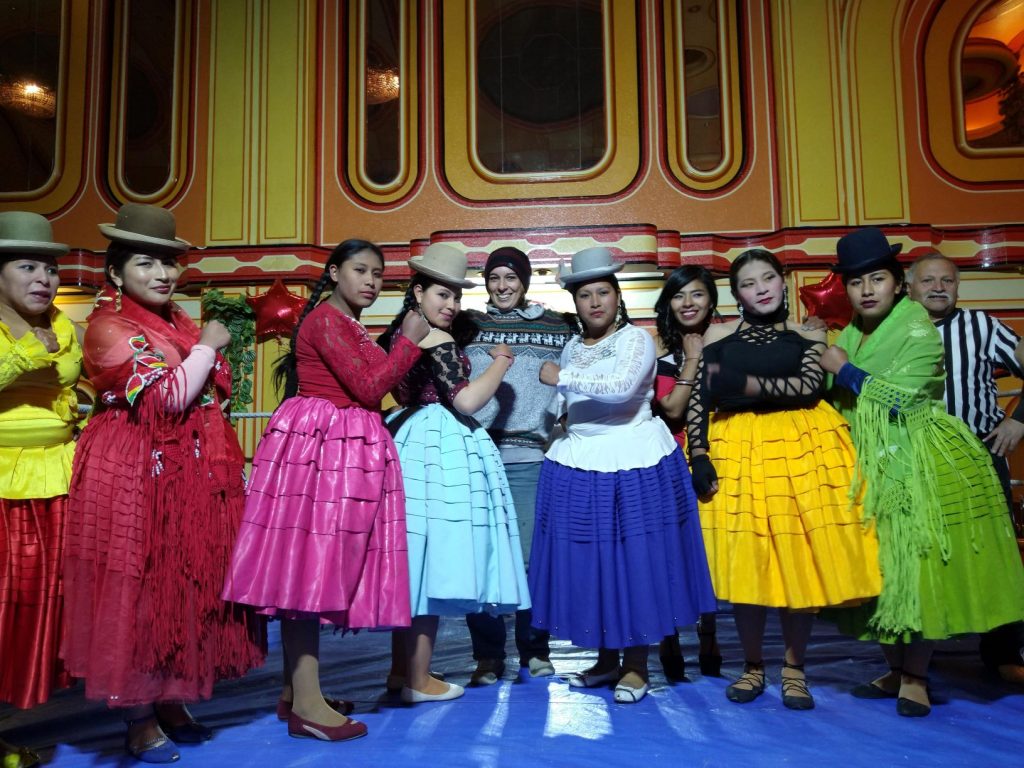
Bodies Hanging from Lamp Posts in La Paz
Things in this article have started to get a bit light hearted, so I’ll end on another dark tourist note. In 1945, the president of Bolivia, Major Gualberto Villarroel was assassinated in La Paz. His body hung from a lamppost by revolutionaries as the city rioted.

As a stark reminder, today you will still see bodies hanging from lampposts across the city! Albeit the bodies are scarecrow like and stuffed with straw. If you see one, it means a crime recently took place in the area and the perpetrator was served ‘community justice’. It’s a stark reminder of what happened to the president when the public take matters in to their own hands.
La Paz Walking Tours
The best walking tour in La Paz is Red Cap Walking Tours. I recommend going along to one of their tours to see and learn about the city in depth. Even better, the tours are FREE! You just tip what you’re able to afford.
Essential Items for Your Trip to La Paz in Bolivia
It’s always useful to have a guide that helps you plan your travels. The Lonely Planet Guide to Bolivia is ideal. Also available as Kindle.
The Rough Guide to South America on a Budget is also an exceptional travel planner and ideal if you are travelling further through the continent. Also available as Kindle.
I have taken one of these across the world. This power strip is essential for international travel. It charges multiple items at once and takes any kind of international plug. Perfect if you’re in a hostel dorm with limited plug sockets or have a lot of tech to charge.
Save the environment and stay hydrated with a bottle that filters your water. This is ideal for travelling overseas where people don’t have the luxury of potable tap water. It will mean you don’t get sick or use a lot of non-recyclable plastic.
Get the best value accommodation in La Paz, Bolivia here:
SHARE OR PIN THIS POST

This post contains affiliate links, but we’ll only recommend things that are genuinely useful to fellow travellers. If you buy something through one of those links, you won’t pay a penny more, but we’ll get a small commission. This helps us afford to keep the lights on when writing blog posts in the dark. Thanks!
See our Disclosures for more information.